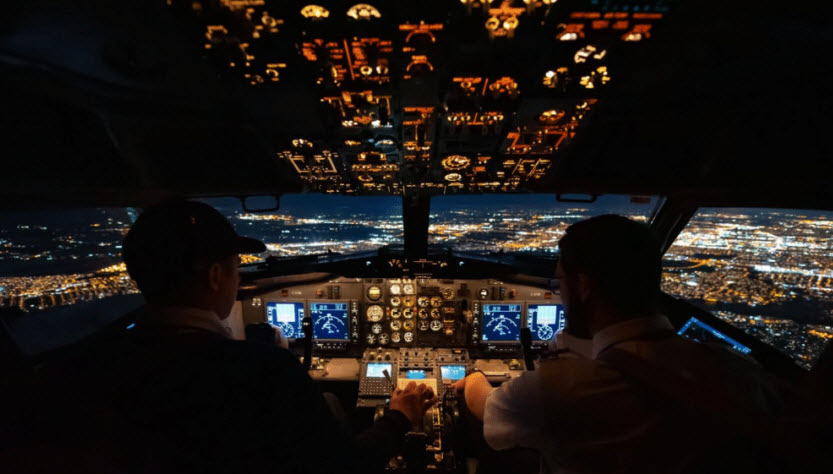
Nolinor’s Boeing 737-200C avionics upgrade is highlighted by four Universal Avionics displays.
Photo: Nolinor Aviation
Written for Yocova – May 12, 2022
Airlines are continually evaluating the lifespan of their aircraft: costs, revenue, mission capability and maintenance requirements are just some of the factors evaluated in an airline’s decision to keep a plane flying. Many jetliners have about a 30-year service life, but in some key cases, an aircraft type’s mix of capabilities can give it an even longer lifetime pass. That’s certainly the case with the Boeing 737-200C Combi, a plane uniquely suited to operations in Canada’s North.
Nolinor Aviation has been flying 737s for years from its base at Mirabel Airport just north of Montréal, Québec, in the heart of Canada’s largest aerospace cluster. While also serving the passenger charter market’s travel providers and sports teams, Nolinor has long focussed on the resource sector, with contracts to deliver cargo and workers to mining sites all over Canada’s remote northern territories.
Flying in Canada’s North is not for the faint of heart. Remote mining sites are often just a mark on a private map, hundreds of miles from any community. Airport facilities may be limited to a graded strip covered in dirt, gravel, ice, or a combination of the above, depending on the time of the year.
The 737-200C not only operates into these austere locations but does it with a cargo payload of 13,600kg, 119 passengers, or a combination of both. The cabin’s configuration is highly adaptable and can be adjusted in just a few hours.
“The aircraft has been flying in Canada since the 1970s and ’80s,” says Nolinor’s chief pilot, Jean-Christophe Séguin. “These aircraft have the main deck cargo door, so they can operate as combi aircraft with a mixed load of cargo in the front, and passengers in the back. And it is the only jet aircraft with an under-wing mounted engine certified to land on gravel runways, with the gravel protection kit.”
That kit was developed by Boeing and includes a gravel-deflector plate attached to the nose gear to protect the plane’s fuselage, and vortex dissipators mounted forward of the engine intakes that keep gravel from being ingested into the low-mounted powerplants.
“You’ve got an aircraft that’s flying at Mach 0.73 or 0.74, with a cargo door, can land on a gravel strip, and is a well-known product. When you look at what’s available to replace it, there are turboprops, but they’re smaller and not as fast. And although the [BAE Avro] RJ-85 is a good aircraft, it’s not as capable as the 737-200,” says Séguin.
These oldest 737s are decidedly analogue aircraft, with original electro-mechanical instrumentation, autopilots and gyroscopes, all increasingly more difficult to maintain. And although the planes have operated for many years, there’s still life in Nolinor’s fleet, leading the airline to update its long-serving workhorses with new technology.
“They’re not aircraft that are just about to expire. They have plenty of years to fly,” Seguin enthuses.
Two of Nolinor’s 1983-vintage Combis have completed a flight-deck upgrade centred on four large Universal Avionics flat-panel advanced displays, giving pilots enhanced situational awareness. The installation of a second satellite-based flight management system and replacement of temperamental mechanical gyroscopes has brought increased system reliability and redundancy, along with improved operational capabilities in poor weather.
The airline has already reaped the benefit from its investment in Skytrac’s on-board data and voice system, providing real-time connectivity between pilots and Nolinor’s operations centre.
“Operations knows the position of all of our aircraft at all times. And with the weather up north, when there’s a change of plans, we know right away,” says Séguin.
Thanks to this marriage of old and new — analogue and digital — Nolinor’s venerable 737-200Cs may very well reach their golden jubilee in service, flying the Canadian skies for more than 50 years.